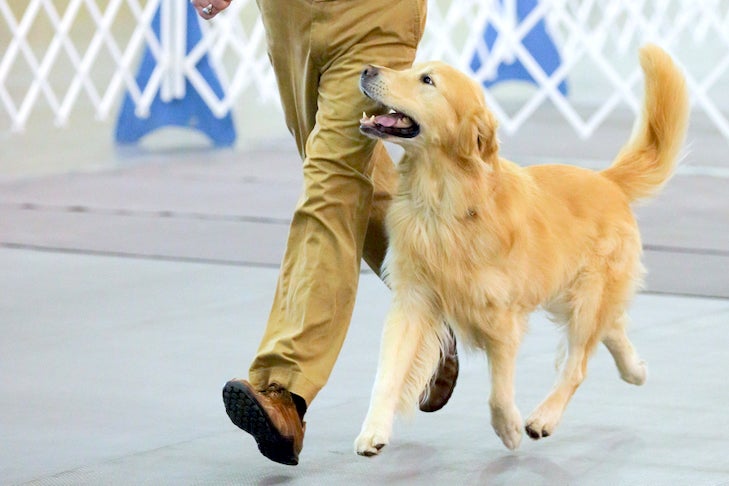How to Train Your Dog to Stop Following You to the Bathroom
Ever wondered why your furry friend insists on accompanying you to the bathroom? It can be quite endearing yet puzzling at the same time. Let’s dive into the reasons behind this quirky behavior and how you can gently train your dog to respect your privacy.
Understanding Your Dog’s Behavior
Pack Mentality in Dogs
Dogs are naturally pack animals, and they see you as part of their pack. In the wild, pack members stick together for safety and companionship. When your dog follows you everywhere, including the bathroom, it’s simply their way of staying close to their pack leader—you.
Seeking Attention and Affection
Sometimes, it’s not just about the pack mentality. Dogs crave attention and affection from their owners. Following you to the bathroom might be their way of getting a few extra moments of your undivided attention.
Anxiety and Separation Issues
For some dogs, the urge to follow you can stem from anxiety or separation issues. If your dog becomes anxious when you’re out of sight, they might feel the need to keep you in their line of sight at all times, even in the bathroom.
Why It’s Important to Address This Behavior
Privacy and Personal Space

Everyone needs a bit of privacy and personal space, including you. Constantly having your dog follow you can be overwhelming and intrusive, making it essential to set some boundaries.
Reducing Dependency on You
While it’s sweet that your dog loves being around you, fostering a bit of independence is crucial for their well-being. Teaching them to be okay on their own helps reduce their dependency and promotes a healthier, more balanced relationship.
Assessing Your Dog’s Behavior
Observing the Root Cause
Take some time to observe your dog’s behavior. Are they following you out of habit, or do they show signs of distress when you leave their sight? Understanding the root cause will help tailor your training approach.
Differentiating Between Anxiety and Habit
It’s important to distinguish whether your dog’s behavior is anxiety-driven or just a learned habit. If it’s the former, you might need to address underlying anxiety issues alongside the training.
Steps to Train Your Dog to Stop Following You

Step 1: Establish Boundaries
Use Verbal Commands
Start with simple verbal commands like “stay” or “wait.” Use these commands consistently when you enter the bathroom. Over time, your dog will learn that they need to stay put.
Practice “Stay” and “Wait”
Practice these commands outside of bathroom situations. The more your dog gets used to “stay” and “wait” in different contexts, the easier it will be for them to understand and follow these commands when you need privacy.
Step 2: Create a Safe Space
Setting Up a Comfort Zone
Create a comfortable area for your dog with their favorite bed, toys, and perhaps an item of your clothing. This can help them feel secure and less anxious when you’re not in the same room.
Positive Reinforcement
Whenever your dog stays in their designated area without following you, reward them with treats and praise. Positive reinforcement encourages them to repeat the behavior.
Step 3: Gradual Desensitization
Short Absences
Start by leaving your dog alone for short periods and gradually increase the duration. This helps them get used to being alone and reduces anxiety over time.
Increasing the Duration
Slowly extend the time you spend away from your dog. Begin with a few minutes and work your way up to longer periods, ensuring they remain calm and comfortable.
Step 4: Distraction Techniques
Toys and Treats
Distract your dog with their favorite toys or treats when you need to go to the bathroom. This keeps them engaged and less focused on following you.
Puzzle Games
Introduce puzzle games that challenge your dog’s mind and keep them occupied. These activities are great for mental stimulation and can distract them from your absence.
Step 5: Encourage Independence
Solo Playtime
Encourage your dog to play independently. Spend some time each day engaging them in solo play with toys or chewables.
Interactive Toys
Use interactive toys that require problem-solving. These toys can keep your dog busy and teach them to enjoy their own company.
Tools and Techniques for Training
Clicker Training
Clicker training is an effective method for reinforcing positive behavior. Use a clicker to mark the desired behavior (staying put) and follow up with a treat.
Crate Training
A crate can provide a safe, den-like environment for your dog. If used correctly, it can help your dog feel secure when you’re not in the same room.
Leash Training
Using a leash indoors can help manage your dog’s movements. Gently lead them to their designated area and use the leash to guide them away from following you.
Common Mistakes to Avoid
Inconsistency in Training
Consistency is key. Make sure everyone in the household follows the same training routine to avoid confusing your dog.
Overreacting to Behavior
Stay calm and composed. Overreacting to your dog’s behavior can heighten their anxiety. Gentle and consistent training is more effective.
When to Seek Professional Help
Persistent Anxiety
If your dog shows signs of severe anxiety or the behavior persists despite your efforts, it might be time to consult a professional dog trainer or a veterinarian.
Consulting a Dog Trainer
A professional trainer can provide personalized strategies and techniques tailored to your dog’s specific needs.
Maintaining the Training Routine
Consistency is Key
Continue reinforcing the training even after your dog seems to have learned. Regular practice ensures the behavior sticks.
Regular Training Sessions
Incorporate short, regular training sessions into your daily routine. This keeps the commands fresh in your dog’s mind and reinforces good behavior.
Conclusion
Training your dog to stop following you to the bathroom is all about patience, consistency, and understanding your dog’s needs. By setting boundaries and fostering independence, you can create a healthy balance in your relationship with your furry friend.
